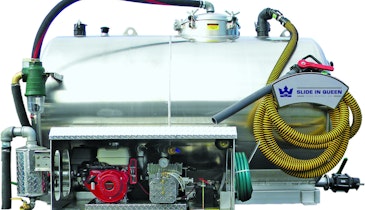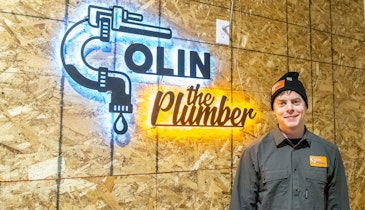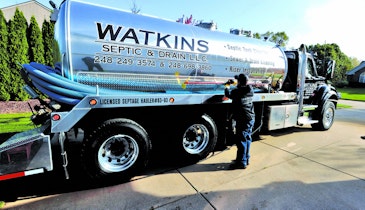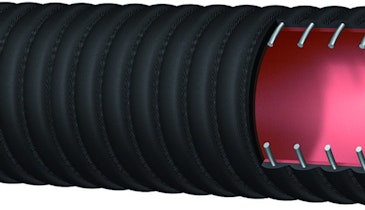The summer of 1988 was the driest in Yellowstone National Park’s recorded history. Dry fuels and high winds combined to spread 248 fires in the greater Yellowstone area. On the worst single day, fire gobbled up more than 150,000 acres.
By November, when winter snows finally extinguished the last of the blazes, more than 25,000 firefighters had tackled them, at a total cost around $120 million.
One of those firefighters was Stuart Andersen, co-owner with wife Kobi Andersen of Andersen Sewer Service in Billings, Mont. Though the destructive fires threatened many lives and properties, they were also responsible for the birth of a whole new business division for Andersen’s pumping, jetting and septic installation firm.
This is the unlikely story of one pumper who, through a series of savvy management decisions, application of diverse skills, and a bit of luck, turned a natural disaster into a springboard to catapult his business above a declining local economy.
Winding road to success
In 1984, the Billings meatpacking plant where Stuart Andersen worked went out of business. He’d been working on the side with a small pumping outfit, and decided to try his hand as an entrepreneur. With a background in metal fabrication and welding, he says, “I built my own pumper truck and went out on my own.” His first jobs included line rodding, minor plumbing and excavation. “You had to go out and find the bad sewer lines to get the repair work, so I started rodding.” Excavation jobs soon included septic system installation.
The Billings area has lots of clay and sandy or rocky soil, with some areas having high water tables. In other places, water lies 300-400 feet deep. Due to these conditions, there are more municipal sewers than septic systems, even in small towns.
When septic systems are required, Andersen generally puts in standard or shallow mound systems with drainfields, perforated pipe and gravel. He also installs pressure-dosing systems when needed, but stays away from any advanced treatment systems. “Those take too much time and messing around,” he explains. “I refer those jobs to other contractors.”
By 1988, Billings had annexed the west end of the city onto its sewer system, and septic work decreased. The region’s economy was also in a slump, further limiting work potential. Andersen saw the writing on the wall and diversified into municipal sewer installation. “I did quite a few of those for 3-4 years, which made up for the septic work we lost. But then that was done and building picked up again, so we went back to septic installation.” Throughout that time, Andersen remained strong in the pumping area.
Building is still booming in the Billings metro area, despite the general downward trend in construction nationally. Volume-wise, about 85 percent of Andersen’s business is septic pumping. Some 20-25 percent of this work is commercial — restaurants, nursing homes, chemical plants and offices located along the Cenex oil pipeline that brings crude down from Alberta, Canada, to Billings refineries. The rest is residential work.
Septic and drainfield installation and repair make up about 5 percent of annual volume. The remainder of Andersen’s work is on the forest fire fighting line, the company’s most recent service addition. Though this work basically only happens two months out of the year, the company bills as much monetarily as it does the rest of the year for all other services. It was an unplanned but fortuitous new revenue stream.
New opportunity
In June 1988, major forest fires began in Yellowstone Park. Govern-ment representatives called Andersen to haul water in their tankers to supply the fire trucks. During this function, Andersen’s tank trucks are referred to as “tenders,” since they’re tending to the needs of the fire extinguishing pumpers. At first, he was too busy to consider the request. As summer went on, sewer installation slacked and the fire situation intensified.
“When we got less busy, I took one of our trucks over (to local government offices for inspection) and they were offering pretty good money to rent our trucks and crews. I realized if I could provide more tanker/tenders, I could make some serious money, so I started building trucks. I love doing metal fabrication, and we even sold some of them.
“A lot of fire areas back up to Forest Service lands that have narrow roads and smaller load limit bridges. They won’t support bigger trucks, so they called in the smaller tenders we build.
“I also wanted to be out where the action was,” Andersen recalls, “so I took fire training. It’s taken quite a few years, but now I’m qualified to be a Strike Team Leader. You’re in charge of five different engines out there on the fire.”
In the groove
It only runs July through the first week of September, unless the company gets called to help overburdened firefighters in California or other neighboring states, but fire suppression work has become big business for Andersen. “There were a couple of us that got started real early, but now everybody’s in it,” he says.
Contracts are for equipment and the labor to run it. These used to be annual, but now cover three-year commitments. The government considers equipment age, contractor performance rating based on evaluation of previous engagements, and personnel ratings and capabilities.
“We have to bid all this work, against anyone from all over the United States,” Andersen explains. Would-be fire contractors must commit to availability during fire season, which in dry years can go as late as Christmas.
He’s structured his regular pumping business so that the seasonal fire work isn’t much of a disruption. “My regular pumping customers are generally willing to wait for me to come in off the fire line. The 15 percent that won’t or can’t wait, we refer to a colleague. We don’t consider them competition. They don’t steal our customers.”
Organization matters
With just three full-time employees, his company runs lean. He keeps everything covered through sheer determination when the season is in full swing. “I’m used to long hours and getting it done, whatever it takes. Most of the time I’m running by myself, though my boy Rhys has helped over the last couple years. When my daughter Ashli turned 18, she started firefighting with us, too.
“Last year, we ran 20 employees during fire season. This year it was 16, full time. It’s temporary work, but people make some good money. They all have to be trained and certified, and there’s an engine boss on every truck. We run three people to an engine.”
Rigorous training required for all fire workers is part of what limits available help. Each completes a basic Wild Lands course, including standards of survival, shelter deployment and a work capacity test for physical endurance for firefighters. Water tender drivers, who work in dangerous conditions on unpredictably moving fire lines, must be able to walk a 15-minute mile. All workers must carry a red card listing their official qualifications, and are required to rotate out for two days break after 14 days on the fire line.
One thing that frustrates Andersen is sometimes having to turn work away. “In addition to supplying fire suppression water, we also do graywater pumping from hand-wash and shower stations, when we have time. I should be doing that all the time, but I can’t find enough help.”
The right stuff
Andersen’s fleet also includes three pumpers: a 1982 Ford F800 with a 2,300-gallon waste tank of local manufacture; a 1987 GMC Topkick with a 2,850-gallon tank fabricated by Andersen; and a 2001 Kenworth T800 with a 3,000-gallon Andersen tank, all carrying 250-cfm Jurop pumps.
The company’s jetting utility truck carries a 1994 Guzzler Ramrodder jet rodder, a Roots PD Blower sewer jetter, a Myers pressure rodder and a 65-gpm. Myers high-pressure vacuum pump.
Water (non-potable for fire and road watering) tenders include a 1995 Kenworth T800 with a 3,200-gallon freshwater tank, a 1980 GMC with 1,500-gallon tank and a 1983 GMC Wildland 2-ton fire engine with all-wheel drive and an Andersen-built tank.
A CUES TV inspection trailer with generator hauls a ProCam DVD Ultra televising inspection camera and a Prototek AR-1 analog underground locator with a BuzzBox communications line locator.
Andersen also built a hand-wash trailer with four concession-type doors. Under each are sinks (12 total), mirrors, soap dispensers and a countertop. Walls are finished with fiberglass board. The unit has its own water system with two heaters, powered by a 5,000-watt Honda generator. It sports lights and a self-contained graywater storage bladder to meet park requirements that contractors pack out whatever they bring in. The company just finished making its second mobile sink unit to service this year’s fires.
These trailers carry 525 gallons of potable water for the sinks. Andersen refills it with a water tender and it’s pumped by another contractor’s graywater truck, unless Andersen has that contract, too. “Sometimes I keep my graywater trucks in the field during fire season, but often it’s too much to keep track of, and I let that contract go to someone else.”
Until he’s able to create the proper balance of qualified help and equipment, Andersen is resigned to leaving money on the table. “I’m picky about our work, and it’s quality first and the dollar second. I want to be able to hold my head high next time I see my customers.”





